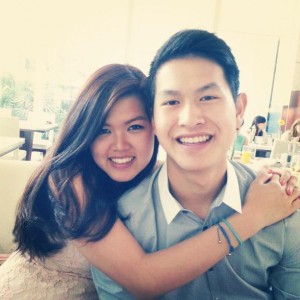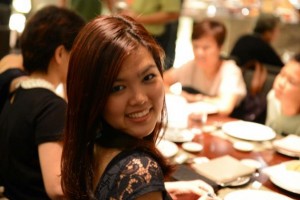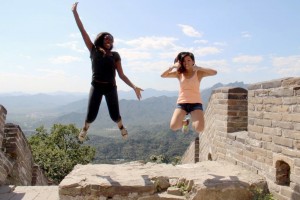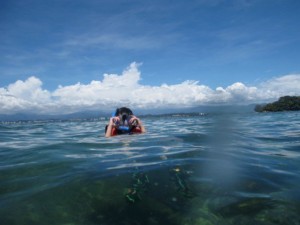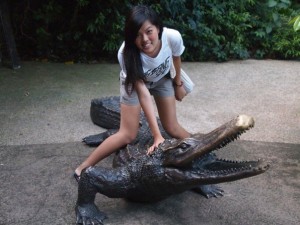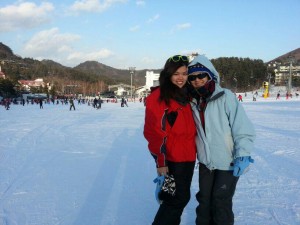Download the PDF Printable Version HERE.
——Topic Overview: The Role of Student Union Buildings on College Campuses——
As most would say: The student union is the heart of a university. It brings students, faculty, and prospective students together, providing them with a so-called “snapshot” of the university and at the same time offering them a welcoming sense of community.
The Association of College Unions International (ACUI) stopped in six states for Campus Welcome Week in 2011 and found that during those first few weeks the unions hosted many events to help students become familiar with campus, provided information, helped with orientation and recruited student employees to serve ambassadors for the union.2 Many studies have been done to show that campus student unions have a major impact on the decision a student makes as to which university he or she will attend.6 This is why over the past few decades so many student unions have been drastically renovating; because they are trying to attract new students into campus.
The first student union was built in 1896 at the University of Pennsylvania, which at that time was “part clubhouse and part country estate.”5 Since 1896, student union buildings have drastically changed along with the price to build them. The 330,000 square foot student union at the University of Massachusetts cost over $75 million dollars to build! 5 Recently, many student unions have been trying to change for the better in the sense that they are trying to be more environmentally friendly. While many student unions have started to “go green” few have achieved the LEED certification status. One of the few LEED certified student union buildings is The Davis Center at the University of Vermont, which was awarded the LEED Gold Seal of Approval in 2008.1
One thing is for certain, student union buildings all over the world will continue to evolve and change as time progresses. One thing that universities need to keep in mind is that their student union building is often the first building that prospective students set foot in. If they want to boost enrollment, they need to keep improving the student union as time goes on with the latest and greatest forms of technologies and student activities.
——Timeline——
- 1896: The first student union opens up Houston Hall on the campus of The University of Pennsylvania.[1]
- 1914: The Association of College Unions (ACU, which later became The Association of College Unions International, ACUI) is founded. [2]
- 1933: Unions begin to start up extra-curricular activities. It was during this year that the first collegiate billiards tournament was held. 2
- 1934: The University of Virginia opens up their new college union named Madison Hall. 1
- 1950: The University of Oregon opens up the Erb Memorial Union, which later became known as The EMU. [3]
- 1956: The Association of College Unions (ACU) adopts “The Role of the College Union”. 2
- 1968: The Association of College Unions (ACU) starts outreaching to other nations. They are renamed to: The Association of College Unions International (ACUI). 2
- 1980: Robert Venturi, an architect, takes on one of the largest college union building remodels in history at the University of Pennsylvania (the first ever student union).1
- 2008: The Davis Center [student union] at the University of Vermont is the first ever student union to be declared LEED Gold Certified. 1
- 2014: The ACUI celebrates its 100th anniversary.
Groundbreaking for the New EMU on the University of Oregon campus is also set underway with a completion date set for September of 2016. 1
——Source Analysis Form——
Footnote Number(s): 4
Name of Source: United They Stand: Growth of the Student Unions
Why did you choose it? This article talks mainly about student unions (groups not buildings). I still think that it’s a good source of information on student unions (yes, the buildings) because it provides a deep, rich history on topics such as student involvement, student government, and politics on college campuses starting back in the 1960s, which could be tied back into why there is a need for independent “student spaces” such as student unions (the buildings) which are an important part of culture on campuses throughout the country and world.
How did you find it? I found this source through JSTOR. When I typed in “History of Student Unions” it was third result that popped up and it is a journal article.
Analyze the source’s authority: The Taylor & Francis Group has over two centuries of experience in producing high-quality scholarly information. In the past couple of decades, The Taylor & Francis Group has become one of world’s most prestigious leaders in international academic publishing, producing more than 2500 scholarly sources a year.
Analyze the source’s objectivity: The Taylor & Francis Group’s main objective is to be a world leader in producing the highest quality scholarly information by making it available for people to use in academic and professional settings.
Analyze the source’s quality: The quality of this article is well written and contains many facts about how and when the growth of student unions (groups not buildings) started to become prevalent throughout the country. It also gives many specific examples of how and when students started to take a stand for their colleges through activism and student-based government.
Analyze the source’s currency: The Taylor & Francis Group is privately funded brand. The group has a deep history in producing scholarly works to institutions, instructors, and students all around the world.
Analyze the source’s relevancy: This source is relevant to the topic at hand because it goes into deep detail about how student governments and unions of students can make a difference on college campuses. By giving students physical space to run functions like these (in a “student” building) it gives the opportunity for campuses all over the chance to thrive.
Footnote Number(s): 5
Name of Source: Forget Classrooms. How Big is the Atrium in the New Student Center?
Why did you choose it? I chose this source because it looked like it had a lot of information on both the history and why student unions are such an important part of college campuses. This article also provides key information on important dates, which I thought could help me with creating my timeline (above).
How did you find it? I found this source through the UO Libraries homepage under the “Articles & Databases” tab. When I typed in “history of student union buildings” it was the second result that came up on the page.
Analyze the source’s authority: The Chronicle of Higher Education is the number one source for news, information, and jobs for college and university faculty members and administrators. Based in Washington DC, The Chronicle has more than 70 writers, editors, and international correspondents all over the world producing top news stories, advice columns, and jobs for people in an academic setting.
Analyze the source’s objectivity: The main goal of The Chronicle of Higher Education is to provide accurate, quality news and information on jobs for students and administrators at colleges and universities throughout the United States.
Analyze the source’s quality: The quality of this article is excellent because it directly relates to my topic I am researching and eventually doing a story on. It provides valuable information on the role of student-based centers (aka student union buildings) in the US, why different styles of architecture were used when constructing these buildings, the costs associated with building them, and finally the history of the centers.
Analyze the source’s currency: The Chronicle is a privately funded newspaper located in Washington DC. It is funded through newspaper/web subscriptions and advertisements.
Analyze the source’s relevancy: This source is relevant to the topic at hand because it goes into great detail about the role of student unions in the US, why different styles of architecture were used when constructing these buildings, the costs associated with building them, and a rich history of the centers and how they perform. This source also provides an ample amount of statistics such as costs of buildings, square footage of buildings, and many specific dates in history specific to the uprising of student union buildings.
Footnote Number(s): 1
Name of Source: Sustainability in the Union
Why did you choose it? I chose this source because it provided a lot of information about how student unions help teach about citizenship, social responsibility, and leadership. The article also examines how student unions can serve as locations for education, conversations, and help students engage in sustainable practices.
How did you find it? I found this source by going to a .gov website. I went to eric.ed.gov and typed in “student union buildings” through their site search. This article returned as the sixth result on the page.
Analyze the source’s authority: Even though this source is a .gov site, the actual article was originally published via Wiley Periodicals Inc. Wiley Periodicals Inc. (aka Wiley) is a global business provider of content that is aimed to improve the outcomes of research for educators and professional practices. Wiley is represented by over 800 different societies and has a database of over 4 million articles ranging from journals to books.
Analyze the source’s objectivity: The main objective of Wiley is to create services and products that will help customers become more effective in the workplace and achieve career and academic success. Wiley also contains a “Global Education” department that serves undergraduate, graduate, and advanced placement students around the world.
Analyze the source’s quality: The quality of this source is outstanding because instead of just providing statistics on college union buildings, it provides great information on how student union buildings help promote better student life, help teach students citizenship, social responsibility, and leadership. This source also provides great information on how a college union functions as a building and a business concurrently.
Analyze the source’s currency: Wiley is a private business group and provider that is primarily funded through donations and private funds. Some governmental funds may also be used to fund them because they provide research information to the government.
Analyze the source’s relevancy: This source is relevant to my topic because again it covers key statistics and points on how student unions are run and function. This source is also relevant because it talks about how college unions are models for better campus sustainability.
Footnote Number(s): 2
Name of Source: A Look at Welcome Week: The Role of College Unions and Student Activities in Welcoming Students
Why did you choose it? I chose this source because it provides great information as to why student unions are so successful among students. The Association of College Unions International (ACUI) took a road trip in this article and surveyed/ observed key trends in student unions and how they helped students throughout their college careers.
How did you find it? I found this source by going to a .gov website. I went to eric.ed.gov and typed in “role of college union” through their site search. This article returned as the first result on the page.
Analyze the source’s authority: Even though this source is a .gov site, the actual article was originally published through The Association of College Unions International (ACUI). The ACUI has 100 years of helping students and colleges connect together in seven different countries. Their staff works at small colleges, large colleges, and community colleges to help build a better campus community for all.
Analyze the source’s objectivity: The ACUI’s main objective is to help better connect colleges and students together into one well-formed community to help promote better sustainability and growth.
Analyze the source’s quality: The quality of this source is great because instead of just a text-based article, it provides the reader with pictures and statistics on how ACUI helps to help and promote a better environment for students on campuses.
Analyze the source’s currency: The Association of College Unions International is a non-profit organization serving colleges and universities round the world for 100 years.
Analyze the source’s relevancy: This source is relevant to my topic because it helps provide information about how college unions help promote a better way of life for students on college campuses all over the world.
Footnote Number(s): 6
Name of Source: The Impact of Facilities on Student Choice of University
Why did you choose it? I chose this source because it provides statistical information as well as information as to why college students choose which college he or she wants to attend. This source talks at length about how student unions (which is often the first building a prospective student will walk into) heavily influences his or her decision on if they will attend that specific college or not.
How did you find it? I found this source by going to a .gov website. I went to eric.ed.gov and typed in “the impact of facilities on students” through their site search. This article returned as the sixth result on the page.
Analyze the source’s authority: Even though this source is a .gov site, the actual article was originally published through a group of college professors in the United Kingdom. These professors If Price, Fides Matzdorf, Louise Smith, and Helen Agahi were staff at Sheffield Hallam University in Sheffield UK. This source is reliable because it provides great facts and statistical information on why students chose the university they did to attend college at. Additionally it talks about how student unions heavily influence a student’s decision.
Analyze the source’s objectivity: The objective of these college professors is to provide their audience with statistical information proving how a student union is run and operated will impact a student’s choice whether or not he or she will attend or will not attend that specific university.
Analyze the source’s quality: This source offers a wide range of statistics and provides well-written information that is easy to understand about how “first-impressions” make or break a student’s decision on what college he or she will attend.
Analyze the source’s currency: The source is a university from the UK. It is knot known if it privately or publically funded.
Analyze the source’s relevancy: This source is directly related to my chosen topic because it talks about how student unions play a huge role in a student’s decision on what college they will be attending. It is also relevant because to it provides many useful statistics on student unions and the enrollment rates at different colleges.
——Secondary Research & Supplementary Information——
- The Role of College Unions, a video from the Association of College Unions International
[2] “ERIC – A Look at Welcome Week: The Role of College Unions and Student Activities in Welcoming Students, Association of College Unions International (NJ1), 2012.” ERIC – A Look at Welcome Week: The Role of College Unions and Student Activities in Welcoming Students, Association of College Unions International (NJ1), 2012. Association of College Unions International. 18 Apr. 2014 http://eric.ed.gov/?q=%22%22&ff1=subStudent+Unions&id=ED535351
[3] “Overview | EMU Renovation Project.” EMU Renovation Project. University Of Oregon. 18 Apr. 2014 http://newemu.uoregon.edu/overview/
4 Kemerer, Frank R., and David A. Young. “United They Stand: Growth of the Student Unions.” JSTOR. The Taylor & Francis Group. 18 Apr. 2014 http://www.jstor.org/stable/40162755
5 Lewis, Michael J. “Forget Classrooms. How Big IS the Atrium in the New Student Center?”
Chronicle of Higher Education 49 (2003): B7. 18 Apr. 2014.
6 Price, If, Fides Matzdorf, Louise Smith, and Helen Agahi. “ERIC – The Impact of Facilities on Student Choice of University., 2002.” ERIC – The Impact of Facilities on Student Choice of University., 2002. 18 Apr. 2014 http://eric.ed.gov/?id=ED474613



